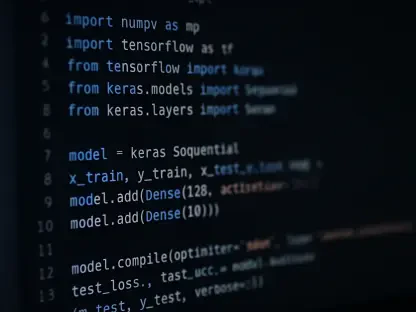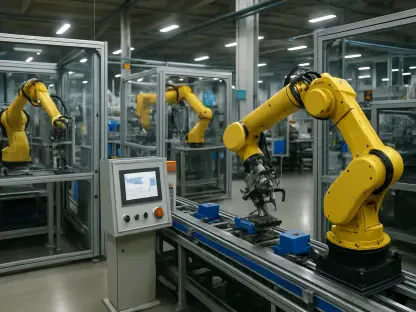The Massachusetts Institute of Technology (MIT) unveiled Boltz-1, a groundbreaking open-source AI model poised to revolutionize biomolecular research. This new AI model has the capability to predict the 3D structures of biological molecules with unprecedented accuracy, matching the performance of Google DeepMind’s celebrated AlphaFold3. The significant distinction between Boltz-1 and AlphaFold3 lies in the fact that while the latter is predominantly limited to academic use, Boltz-1 is fully open-source, promoting greater collaboration and innovation in the fields of drug development and biomedical research.
Development of Boltz-1: The Team’s Mission and Efforts
Key Contributors and Their Vision
The creation of Boltz-1 was spearheaded by MIT graduate students Jeremy Wohlwend and Gabriele Corso, alongside Saro Passaro, an MIT Jameel Clinic Research Affiliate, and professors Regina Barzilay and Tommi Jaakkola. These individuals shared a common goal: to develop a robust and accessible platform that advances biomolecular modeling. By making cutting-edge AI tools available to the global scientific community, they aimed to democratize the field, enabling researchers worldwide to harness the power of advanced biomolecular prediction techniques. This inclusive approach promises to accelerate discovery and innovation, opening new pathways in drug design and biomedical research.
The journey of developing Boltz-1 was not without its challenges. The team devoted four intense months to the project, conducting numerous experiments to refine the model. One significant hurdle was addressing the inherent ambiguity and heterogeneity present in Protein Data Bank entries. Protein structure prediction is a complex task, as the folding of a protein’s amino acid chain into its 3D structure directly affects its biological functions. Accurate modeling of these structures is crucial for disciplines such as drug design and protein engineering. Overcoming these obstacles, the MIT team succeeded in creating a model that achieves accuracy comparable to AlphaFold3, a feat that underscores the potential of open-source solutions in scientific research.
The Science Behind Boltz-1: Enhancements and Impact
Improving the Diffusion Model
Inspired by the initial approach of AlphaFold3, the MIT team made critical enhancements to the underlying diffusion model used in predicting protein structures. These improvements were pivotal in boosting the model’s prediction efficiency and accuracy. By refining this aspect of the AI, the developers not only replicated the success seen with AlphaFold3 but also managed to make significant strides in optimizing the process. Key to the success of Boltz-1 was the decision to open-source both the model and the entire pipeline for training and fine-tuning it. This transparency invites the global research community to build upon MIT’s work, fostering a collaborative environment that can lead to further improvements and discoveries.
The open-source nature of Boltz-1 stands out as a significant advantage. Unlike proprietary models that restrict access and use, Boltz-1 allows researchers from diverse backgrounds and institutions to leverage and enhance the model according to their specific needs. This openness can spur innovation by enabling scientists to explore new applications and refine the model based on their unique datasets. The collaborative effort facilitated by sharing the complete pipeline encourages a community-driven approach to advancing biomolecular research, ultimately leading to more rapid and inclusive scientific progress.
Achievements and Future Directions
The potential applications of Boltz-1 are vast, enabling scientists to accelerate drug discovery processes, develop new therapies, and deepen our understanding of complex biological systems. By making this technology accessible to a broader community, MIT aims to empower researchers worldwide to contribute to groundbreaking advancements in health and medicine, paving the way for new scientific discoveries and improved health outcomes for people globally.









